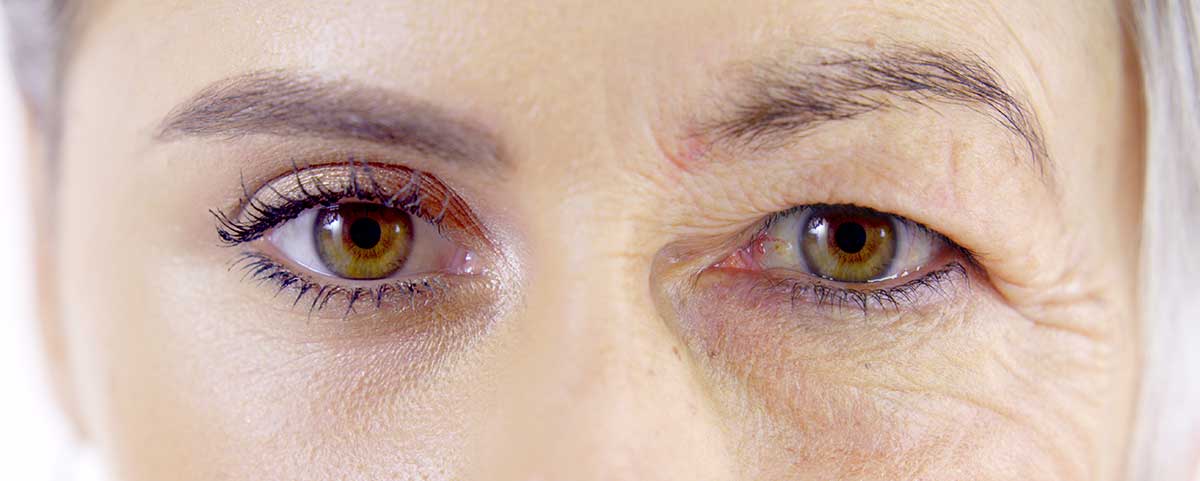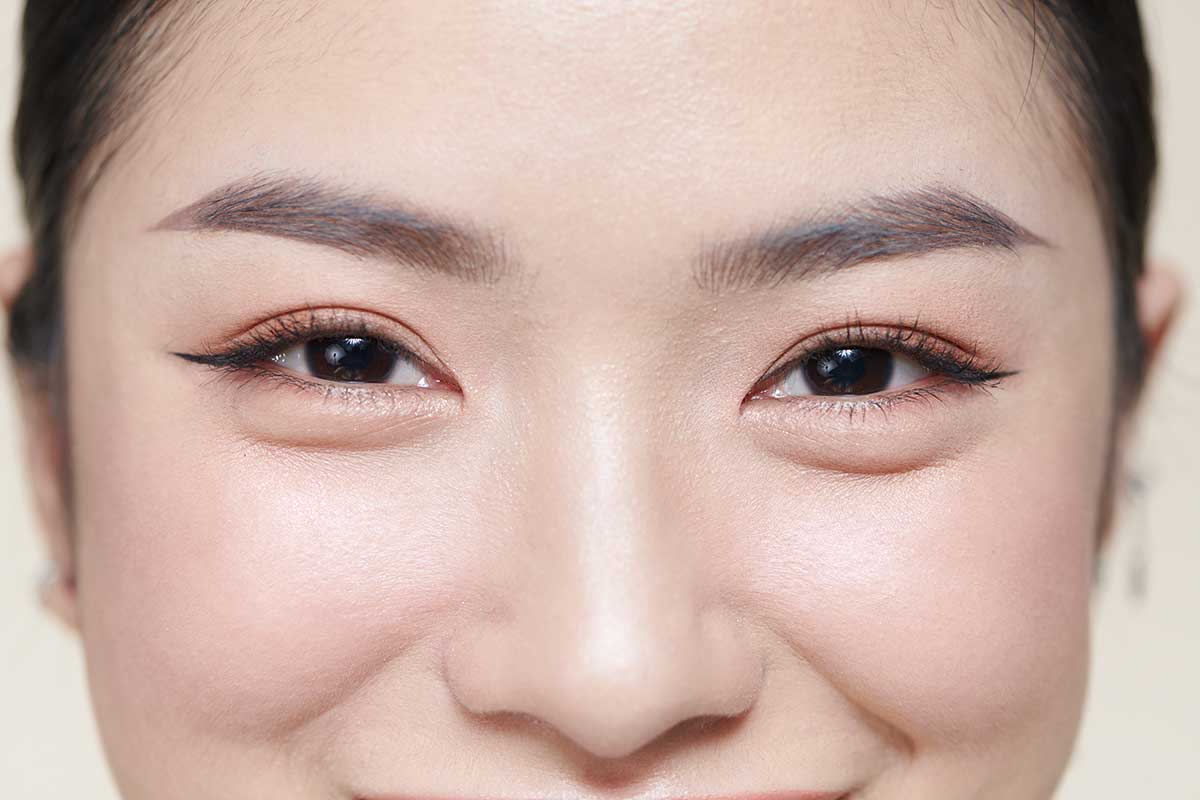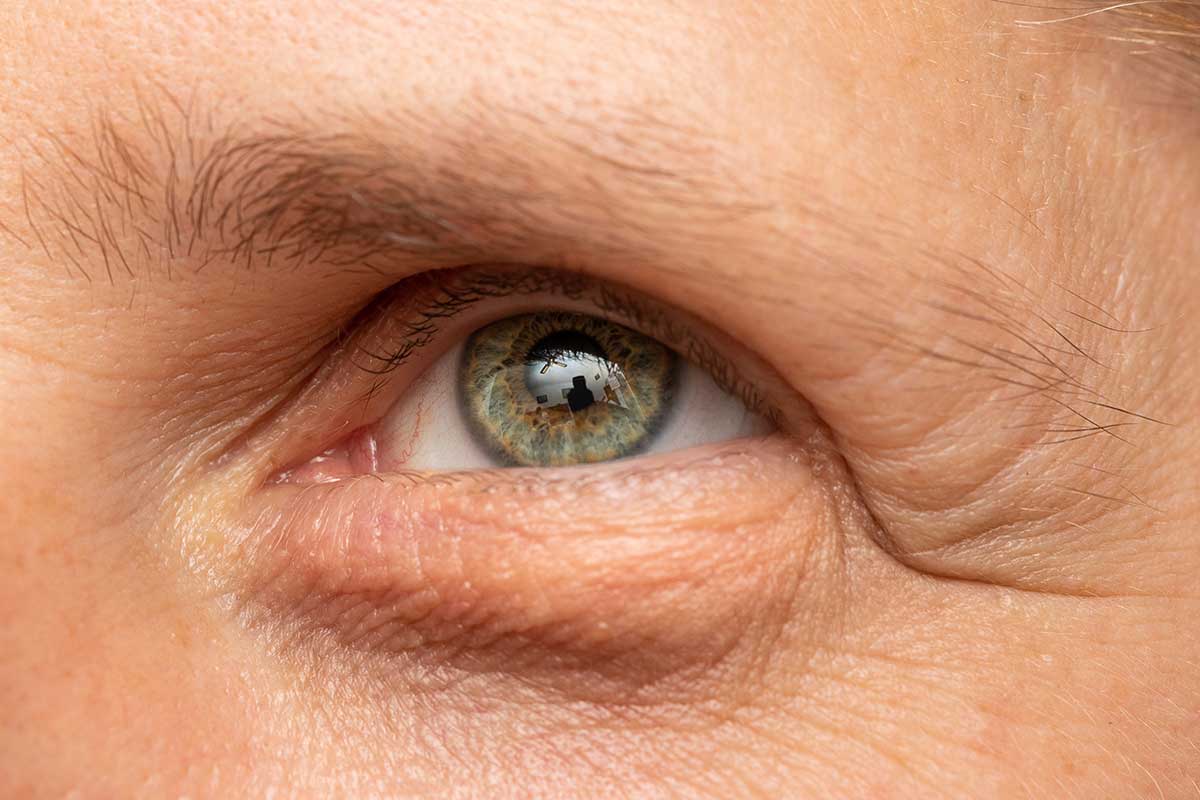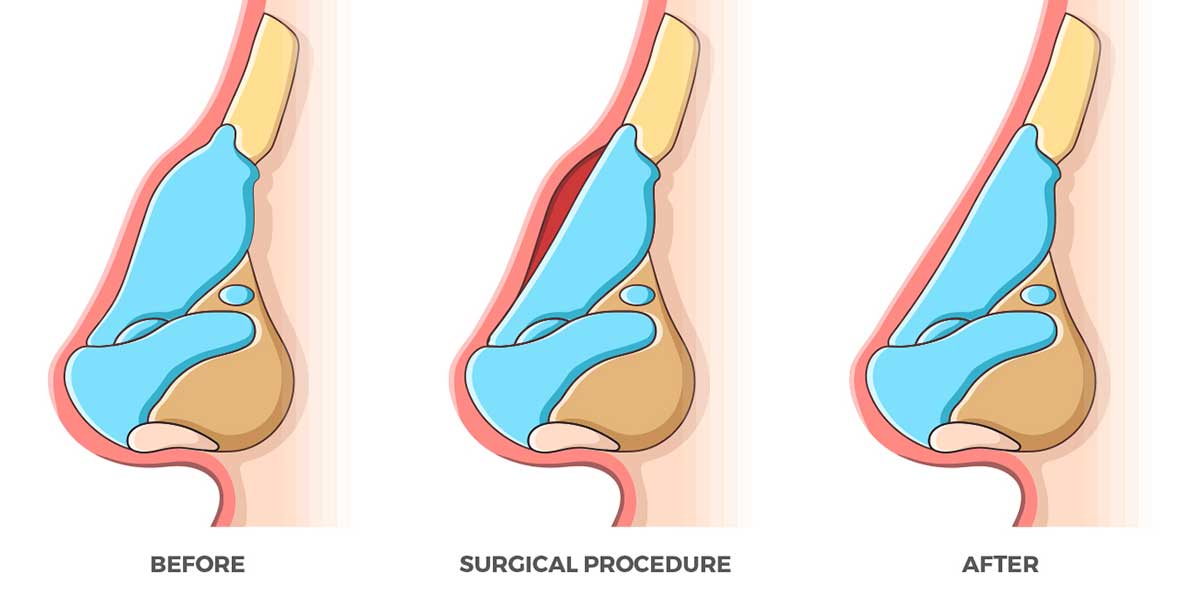Many patients request for enhancement of the central features of the face such as the eyes and nose. They may feel that their single eyelids are unattractive or their crooked nose is distracting. In addition, there are commonly functional issues such as obstruction of vision or breathing that can be improved with corrective surgery. Read on to find out more about the different specialized procedures that are tailored to each problem area.

The ideal brow position is slightly above the bony orbital rim in women and at the level of the rim in men. It can droop with age due to loss of volume around the brow, with the deflation causing loss of soft tissue support. Conversely, some patients notice their brows rising higher with age. This is usually because of excess upper eyelid or levator ptosis, obscuring vision. The forehead muscles then become overactive, in an attempt to lift the brows to improve the field of vision.
The shape of the brow also plays a vital role in facial expression, for example, an unnaturally arched brow can give an impression of fierceness or surprise. The brow shape should fit the facial shape, for example, in a long face, a flat eyebrow shape will make the long face appear shorter.
Non-invasive ways of raising the brow include Botox injection to relax opposing muscles such as orbicularis oculi and depressor supercili. This results in less downward pull on the brow and a lifting effect. When the brow is uneven in shape between both sides, judicious placement of Botox can help adjust the shape and reduce the asymmetry.
Hyaluronic acid fillers can also be injected to augment the retro-orbicularis fat pad to increase brow support. Injecting filler under the brow can also help certain patients with sunken, hollow upper eyelids.
Ultraformer HIFU or Morpheus8 treatment can be used to tighten the skin and subcutaneous tissues of the area.
Brow lift can be carried out either from the temple area (with or without endoscopic assistance) or by removing an ellipse of skin from above the brow (direct brow lift).
Excess upper eyelid skin can also be removed from below the brow, hiding the scar along the lower border of the brow. This is called a sub-brow lift. There is less bruising and swelling as compared to a conventional upper blepharoplasty and recovery is generally faster. The brow can then be stabilised using sutures during this surgery.
These are day surgery procedures and can be done under local anaesthesia with or without sedation. Recovery is generally fast although some bruising and swelling can be expected.


Almost half of Asians are born without a double eyelid crease. Having double eyelids makes the eyes “open up” and look brighter. Double eyelid creases can be parallel to the eye margin (outfold) or tapered downwards towards the nose (infold). Not infrequently, the crease shape may differ between both eyes. For the patient born without a crease, one’s own anatomy may then determine the type of fold that can be achieved. This can be decided during physical examination. Regardless of what is chosen, the current trend seems to favor a subtle, natural appearance.
The suture technique is simpler yet potentially reversible should you change your mind. Several stitches are sewn into the upper eyelid between skin and deeper structures to create a natural looking fold. Recovery is somewhat quicker than the incisional technique. Younger patients in their 20s or 30s have minimal excess skin and fat hence are more suitable for this technique. The fold can come down after a few years and the procedure may need to be repeated. In addition, in eyes that are more asymmetrical to begin with, it may not be possible to correct this with suture technique.
Incisional technique is commonly preferred in older patients as it allows removal of a significant amount of excess skin. At the same time, some fat can be removed to reduce puffiness. The crease is then created by suturing the cut edge of the skin to more rigid structures below. With proper management and massage, the scars are usually not noticeable after a few months.
Many Asians have a prominent epicanthal fold. This is a little fold of skin over the inner corner of the eye. As discussed above, one’s anatomy, which is the presence of an epicanthal fold, will prevent formation of a parallel double eyelid crease. Medial epicanthoplasty is needed to open up the inner corner of the eye and expose the caruncle. The double crease is no longer pulled downwards nasally. A parallel fold can then be created, resulting in a more Caucasian or Pan-asian appearance if desired.

Eyelid ptosis (pronounced toh-sis) is a medical condition whereby the upper eyelids appear droopy. The most common cause is when the eye opening mechanism (Levator aponeurosis) is detached from the cartilage plate of the eye, making it hard to open the eyes effectively.
It can cause an individual to appear tired and lead to functional issues such as obstruction of vision. In such instances, insurance and Medisave may be used for the surgery, subject to approval.
The aim of surgery is to improve the field of vision such that less effort is required to keep the eyes open. The eyes will also appear bigger and brighter.
The excess skin of the upper eyelid is removed. Depending on the severity of the ptosis, the levator aponeurosis is advanced or resected to lift the upper eyelid. Sutures are used to secure the repair. The final incisions are within the crease of the upper eyelid, hence they are typically inconspicuous.
Intraoperative swelling can affect the judgement of the eyelid levels. In a few patients, this may need to be re-adjusted post-operatively in the clinic, as needed.
Common lower eyelid problems include the presence of dark eye circles, prominent tear trough/hollowing, eyebags and skin wrinkling.
Dark eye circles can be caused by many factors such as genetics and inadequate sleep. The skin may be very thin or pigmented and the underlying blood vessels prominent. Antioxidant creams, lasers, Morpheus8, fat grafting have all been used in the treatment, addressing each of the causative factors.
The tear trough is the groove between the lower eyelid and the cheek, extending outwards to form a ring around the eye in many patients. Anatomically this is due to a ligament (supporting structure) at this location. As the cheek sags and loses volume with age, the lid-cheek junction is further unmasked. Eyebags protruding above this line also contribute to the illusion of shadowing.
As this tear trough groove gives a “sad and aged” look, much focus has been given to effacing it. Fillers are very useful to “fill up” the depression and camouflage the lid-cheek junction.

Eyebags are caused by protruding fat. They can be removed using hidden incisions inside the lower lid or just below the lashes (lower blepharoplasty procedure). Some of the removed fat can be placed back in small pieces over the rim, to reduce the visibility of the lid-cheek junction.
Some patients have more advanced mid-cheek aging, that is their cheeks sag and hang down over the nasolabial crease (which is the smile line between nose and corner of mouth).
A convenient and minimally invasive way to improve cheek sagging and lower eyelid appearance is the use of soft tissue fillers in the clinic. These are composed of hyaluronic acid, which is a component of our body’s own tissues. Therefore they integrate well and do not cause any long-term complications.
Fat grafting to the cheeks is another good method of restoring volume that has been lost with age. Fat can also be injected into the lips, temporal area or wherever required for total facial rejuvenation. Wrinkles and creases of the face can also be reduced with refined fat, further improving the skin quality. This is only injected where it is needed to improve facial contour and definitely not to make the face look fat. Liposuction through mini-incisions is used to harvest the fat from wherever is desired, resulting in simultaneous contouring of the area.
Conversely, some patients have more than sufficient cheek tissue; however, this has drooped downwards with time. The focus of treatment then changes to anatomic repositioning of the cheek tissue that has descended. A midcheek lift may be required, wherein the cheek tissue is mobilized and suspended upwards with sutures.
The degree of swelling and bruising varies according to the patient, but 80% of the swelling typically resolves by 2 weeks. In some patients, it may take a few weeks more for complete resolution of mild swelling. There may be temporary minor side effects such as watery eyes and blurry vision.
During the recovery process, the patient is instructed on how to clean the eyelids and apply antibiotic ointment. Rubbing the eyes should be avoided and patients may need to wear sunglasses when out and about. Ice-packs are used for the first 3 days to reduce swelling, followed by warm compresses as needed from day 4-7. Sutures are usually removed at 5-7 days and periodic follow-up is essential to ensure proper recovery.

Facial and neck soft tissue sagging is a common complaint in many patients over 40 years old. Currently, we have many methods in our toolbox that can postpone the signs of aging. These include botox, fillers and lasers/energy devices. Threadlift with special sutures may also be an option when the lower face/neck sagging is mild. This can also be a suitable method when the patient cannot afford the recovery time required for a facelift.
However, if there is too much loose, inelastic skin, a facelift with or without a necklift may be required to remove this skin. Beneath the skin is the SMAS layer, which stands for superficial musculoaponeurotic system. Generally, this SMAS layer also needs to be undermined and repositioned for better longevity of results (High SMAS or deep plane techniques). Fat grafting is commonly performed simultaneously for midface rejuvenation and improvement of wrinkles.
Sutures are usually removed from day 5-7. Drain tubes are used for a few days to vacuum up any blood or fluid after surgery and aid in internal healing. Patients are usually comfortably recovered 2 to 3 months after surgery. Some numbness and firmness in the face and neck areas are expected for 6 to 9 months after surgery.
Asian patients commonly request for an improvement in the height of the nasal bridge as well as a more projected and well-defined tip. Caucasians, on the other hand, tend to have an “overdeveloped” nose, with an obvious hump and a drooping tip.

Some patients may present with post-traumatic nasal deformity after a nose fracture. Besides making the nose appear crooked, they may suffer from blocked nose and difficulty breathing. Rhinoplasty, also known colloquially as a nose job, can thus be performed to improve form and function.
Hyaluronic acid fillers can be injected for this purpose. These degrade over time, however they are preferred as they can be easily dissolved if the result is undesirable. If the patient likes the result, they can choose to continue with injections or undergo an augmentation rhinoplasty.
In Caucasian noses, fillers are used to smoothen out irregularities, elevate drooping nasal tips as well as to enhance the area between the eyebrows (nasion/glabella) which loses volume with aging.
Fat grafting has emerged as a minimally-invasive way to augment the nasal dorsum and nasion/glabella area. However, the results may not be comparable to surgical rhinoplasties if a more complex reshaping of the nose is required.
Injection techniques must be undertaken with caution due to the rare occurrence of blindness reported in the literature. This Is due to filler material entering blood vessels around the nose and travelling backwards into the eye. Proper injection technique is vital to avoid blood vessels and minimize this risk.
Rhinoplasty relies upon analysing the nasal appearance and correlating it to the underlying structural framework. Similar to building a house, repositioning and reshaping of the cartilage is then undertaken to create a more attractive nasal contour. The aesthetics of the nose must be considered in the context of the proportions of the face. For example, a projecting nose does not fit in with a retruded chin – a chin implant may then be recommended to “balance the face”.
When there are functional problems such as nasal blockage, proper correction of the cause is very important to improve these symptoms. For example, this can include removal of deviated septal cartilage (septoplasty) or insertion of straight cartilage pieces to open up and support the nasal passageway (spreader grafts).
The low nasal dorsum can be raised using an implant (Silicone/Gortex) or one’s own tissue. This includes diced cartilage or dermal fat grafts. For the nasal tip, suture or cartilage graft techniques are employed to produce the desired tip projection and definition. The alar base (flared part of the nostrils) can also be narrowed if it is fleshy or bulky.
Cartilage can be harvested from the nasal septum, one or both ears or from the ribs. The donor site depends on the amount of cartilage that is required and varies from patient to patient. The incisions used are hidden and inconspicuous.
A Caucasian rhinoplasty is usually very different from an Asian rhinoplasty. The profile of the nasal bridge can be too prominent or convex due to bone and cartilage humps. Other common complaints are that the tip is too bulky or droopy.
During surgery, the nasal bridge is reduced by removing the hump. The long tip is shortened and refined with suturing techniques and cartilage grafts to improve the shape. Osteotomy is sometimes performed to reposition nasal bones that are crooked or excessively wide.
Steristrips and nasal packs are placed to stabilize the nose in the initial post-operative period. These are removed with the sutures in 5-7 days. Mild bruising, swelling and a blocked nose sensation are not unexpected. The soft tissues of the nose tend to hold swelling longer than most other parts of the body. Therefore, even though there will be a marked difference after three to four weeks, the final nose contour may take several months to appear.

Otoplasty, also known as ear reshaping surgery, is performed to address ears that protrude abnormally (bat ear). The incisions are commonly placed behind the ear or within natural creases to minimize visible scarring.
Techniques may include scoring, folding, or removing excess ear cartilage to create a more natural ear contour. Various suturing techniques are then used to secure the reshaped cartilage in place. This helps maintain the new ear shape and position.

Some individuals naturally have a weak or receding chin, which may make the neck appear fuller or the nose seem more prominent. Chin augmentation can address these concerns by adding volume and projection to the chin, thus improving facial proportions. Others may have concerns such as dimpling or creases in the chin caused by the underlying mentalis (chin muscle) which can be addressed by botulinum injection.
For those seeking a non-surgical approach, dermal fillers can be strategically injected to create a more defined chin and jawline. This option provides immediate results with minimal downtime, making it an excellent choice for those looking for a quick enhancement.
Fat grafting involves using one’s own fat to introduce volume to the chin and jaw. About 50% of the fat that is injected survives and lasts a lifetime. Alternatively, chin implants can be placed using a small incision within the mouth. This can be performed under local anesthesia with sedation.

Some people may have naturally thin lips, or experience loss of volume with increasing age. Our approach to lip augmentation is focused on harmonizing your lips with your facial features to produce a balanced and proportionate result. Minimally invasive methods include using fillers to enhance the lips. Besides subtly plumping up the lips, the corners of the lip can be slightly upturned by injecting filler to support this area. This is a quick office-based procedure and results generally last 12-18 months. Alternatively, one’s fat can be harvested from wherever it is redundant, processed then injected back into the lips for a more long-lasting result.
Some patients may have the appearance of a “long lip”, with an increased distance between the bottom of the nose and the top of the lips. It may also become apparent with age, due to dwindling collagen and stretching ligaments. Lip lift is a procedure that specifically addresses this issue. Typically done under local anesthesia, a bullhorn-shaped strip of skin is removed just below the nostrils, hiding the final scar there. By shortening the distance between the nose and lip, the red lip will roll outwards, creating a fuller and younger appearance.